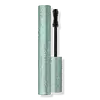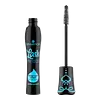Too Faced Better Than Sex Waterproof Mascara Versus Essence Lash Princess False Lash Effect Waterproof Mascara
What's inside
What's inside
 Key Ingredients
Key Ingredients

 Benefits
Benefits

 Concerns
Concerns

 Ingredients Side-by-side
Ingredients Side-by-side

Isododecane
EmollientParaffin
PerfumingVp/Eicosene Copolymer
Beeswax
Emulsion StabilisingDisteardimonium Hectorite
StabilisingPentaerythrityl Hydrogenated Rosinate
Cyclopentasiloxane
EmollientTalc
AbrasiveCopernicia Cerifera Wax
Polybutene
Water
Skin ConditioningSilica
AbrasiveCaprylyl Glycol
EmollientPolyquaternium-7
Plukenetia Volubilis Seed Oil
EmollientTrimethylpentanediol/Adipic Acid/Glycerin Crosspolymer
Skin ConditioningVp/Hexadecene Copolymer
Caprylic/Capric Triglyceride
MaskingOctyldodecanol
EmollientHoya Lacunosa Flower Extract
Skin ConditioningPhenoxyethanol
PreservativeSodium Benzoate
MaskingCI 77499
Cosmetic ColorantIsododecane, Paraffin, Vp/Eicosene Copolymer, Beeswax, Disteardimonium Hectorite, Pentaerythrityl Hydrogenated Rosinate, Cyclopentasiloxane, Talc, Copernicia Cerifera Wax, Polybutene, Water, Silica, Caprylyl Glycol, Polyquaternium-7, Plukenetia Volubilis Seed Oil, Trimethylpentanediol/Adipic Acid/Glycerin Crosspolymer, Vp/Hexadecene Copolymer, Caprylic/Capric Triglyceride, Octyldodecanol, Hoya Lacunosa Flower Extract, Phenoxyethanol, Sodium Benzoate, CI 77499
Isododecane
EmollientCera Microcristallina
Emulsion StabilisingWater
Skin ConditioningVp/Eicosene Copolymer
Euphorbia Cerifera Wax
Trimethylsiloxysilicate
EmollientTalc
AbrasiveCopernicia Cerifera Wax
Disteardimonium Hectorite
StabilisingPropylene Glycol
HumectantSilica
AbrasiveSorbitan Isostearate
EmulsifyingPanthenol
Skin ConditioningSimmondsia Chinensis Seed Oil
EmollientTocopherol
AntioxidantPropylene Carbonate
SolventTrimethyl Pentanyl Diisobutyrate
Ethylhexylglycerin
Skin ConditioningPhenoxyethanol
PreservativePotassium Sorbate
PreservativeCI 77499
Cosmetic ColorantIsododecane, Cera Microcristallina, Water, Vp/Eicosene Copolymer, Euphorbia Cerifera Wax, Trimethylsiloxysilicate, Talc, Copernicia Cerifera Wax, Disteardimonium Hectorite, Propylene Glycol, Silica, Sorbitan Isostearate, Panthenol, Simmondsia Chinensis Seed Oil, Tocopherol, Propylene Carbonate, Trimethyl Pentanyl Diisobutyrate, Ethylhexylglycerin, Phenoxyethanol, Potassium Sorbate, CI 77499
 Reviews
Reviews

Ingredients Explained
These ingredients are found in both products.
Ingredients higher up in an ingredient list are typically present in a larger amount.
Ci 77499 is also hydrated iron III oxide. It is created from mixing red and black iron oxides. This helps give shades of darkness to a product.
Iron III oxides are classified as inorganic chemicals for coloring.
Copernicia Cerifera Wax comes from a palm tree native to Brazil; another name for this ingredient is Carnauba Wax.
This ingredient is used to thicken texture and also leaves behind a film when applied.
Fun fact: This wax has the highest melting point of all natural waxes and low solubility.
Learn more about Copernicia Cerifera WaxDisteardimonium Hectorite comes from the clay mineral named hectorite. It is used to add thickness to a product.
It can also help stabilize a product by helping to disperse other ingredients.
Hectorite is a rare, white clay mineral.
Learn more about Disteardimonium HectoriteIsododecane is a fragrance, emollient, and solvent.
As an emollient, it helps your skin stay soft and hydrated. Emollients help trap moisture into your skin.
Isododecane's role as a solvent makes it a great texture enhancer. It spreads smoothly on skin and does not leave a sticky feeling behind. Isododecane also helps prevent color transfer in makeup products.
Isododecane is not absorbed into skin.
Learn more about IsododecanePhenoxyethanol is a preservative that has germicide, antimicrobial, and aromatic properties. Studies show that phenoxyethanol can prevent microbial growth. By itself, it has a scent that is similar to that of a rose.
It's often used in formulations along with Caprylyl Glycol to preserve the shelf life of products.
Silica, also known as silicon dioxide, is a naturally occurring mineral. It is used as a fine, spherical, and porous powder in cosmetics.
Though it has exfoliant properties, the function of silica varies depending on the product.
The unique structure of silica enhances the spreadability and adds smoothness, making it a great texture enhancer.
It is also used as an active carrier, emulsifier, and mattifier due to its ability to absorb excess oil.
In some products, tiny microneedles called spicules are made from silica or hydrolyzed sponge. When you rub them in, they lightly polish away dead skin layers and enhance the penetration of active ingredients.
Learn more about SilicaTalc is a clay mineral. It helps absorb moisture and improve the texture of products. Like other types of clay, Talc can have a slight exfoliating effect on skin. Talc can be added to increase the volume of products.
Some Baby powders are made by combining talc with corn starch. The word "talc" comes from Latin and originates from Arabic. Talc is a mineral commonly found throughout the world.
If you have any concerns about using talc, we recommend checking out the FDA's official page.
Learn more about TalcWe don't have a description for Vp/Eicosene Copolymer yet.
Water. It's the most common cosmetic ingredient of all. You'll usually see it at the top of ingredient lists, meaning that it makes up the largest part of the product.
So why is it so popular? Water most often acts as a solvent - this means that it helps dissolve other ingredients into the formulation.
You'll also recognize water as that liquid we all need to stay alive. If you see this, drink a glass of water. Stay hydrated!
Learn more about Water